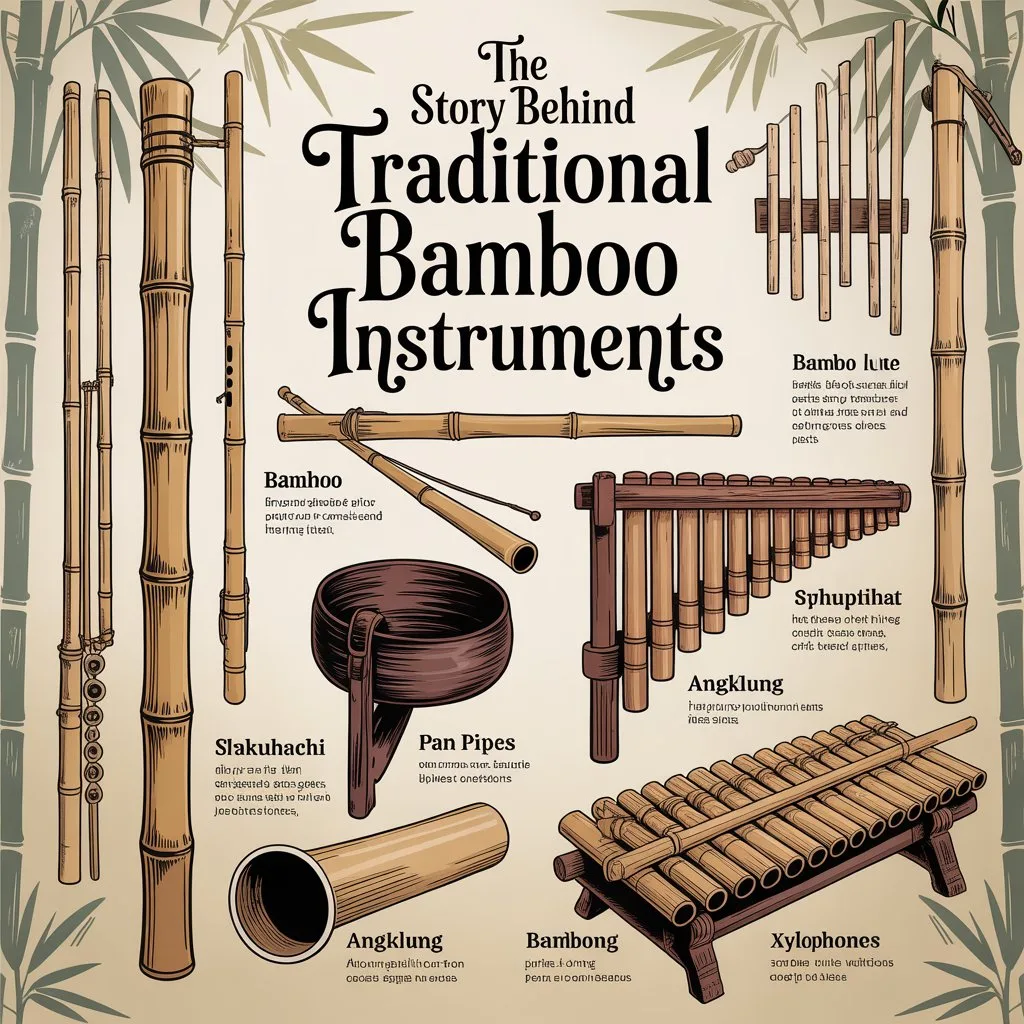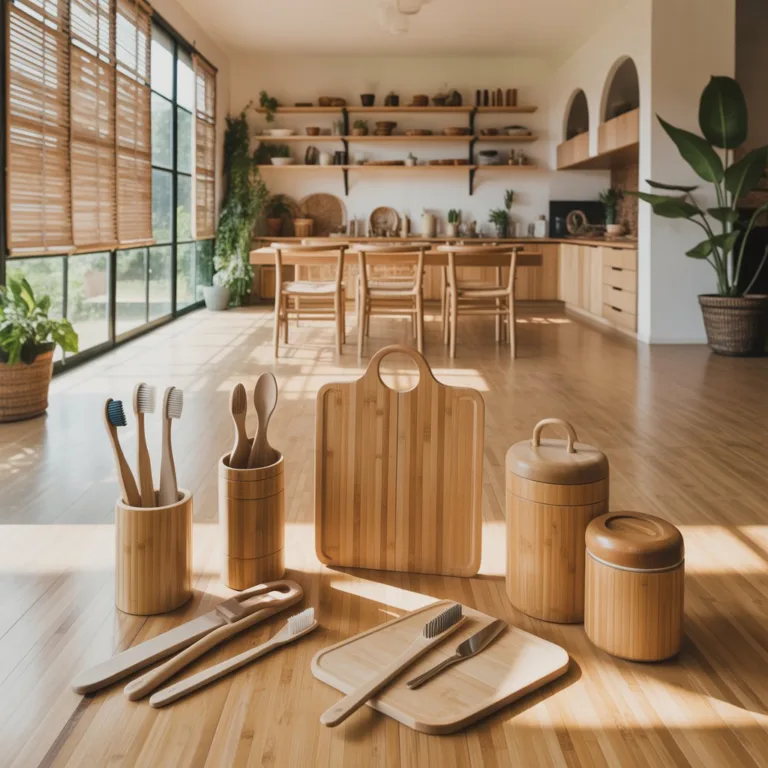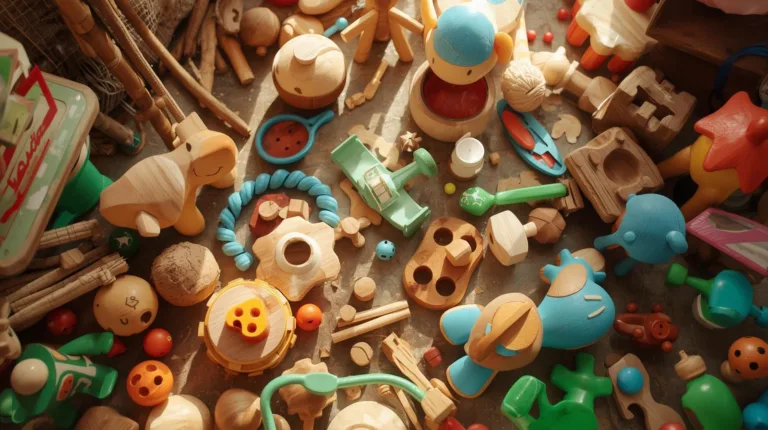The story of traditional bamboo instruments is a remarkable journey through music, craftsmanship, and culture. Across continents and generations, bamboo has been transformed into flutes, drums, stringed instruments, and percussion tools that carry the rhythm of nature itself. Its natural hollowness, strength, and resonance have made it one of humanity’s oldest and most versatile materials for music-making.

Understanding the story behind traditional bamboo instruments is not only about exploring history but also about recognizing how people connected deeply with the environment to create beauty and meaning through sound.
The Global Legacy of Bamboo in Music
Bamboo is one of the most abundant and sustainable plants on Earth. Found throughout Asia, Africa, and South America, it has long been an integral part of local communities. Its light weight, flexibility, and acoustic properties made it a perfect choice for crafting musical instruments.
From ancient rituals to modern performances, bamboo instruments have played a role in storytelling, celebrations, and spiritual practices. Each culture that embraced bamboo gave it a unique musical identity — one that reflected its people’s values, traditions, and connection to the land.
The Natural Qualities That Make Bamboo Musical
The physical structure of bamboo contributes to its extraordinary acoustic qualities. The plant’s hollow chambers and segmented design create natural resonating tubes. When air, string tension, or striking force interacts with these chambers, bamboo produces a warm, organic tone that feels alive.
Musicians and artisans often choose bamboo not only for its sound but for its symbolism — it represents resilience, simplicity, and harmony with nature. Its rapid growth rate and ability to regenerate make it a symbol of sustainable creativity.
Ancient Origins and Cultural Roots
The earliest bamboo instruments date back thousands of years. Archaeological findings in China, India, and Southeast Asia reveal flutes and other wind instruments made from bamboo that are over 7,000 years old. These discoveries suggest that early civilizations already recognized bamboo’s potential as both a practical and spiritual material.
In many Asian traditions, bamboo instruments were used in rituals to communicate with nature spirits or express gratitude for harvests. Music was not merely entertainment — it was a bridge between humans and the natural world.
Bamboo in Asian Musical Traditions
Asia holds perhaps the richest diversity of bamboo instruments in the world. Each country has developed its own distinctive soundscapes built on this humble plant.
China
China’s relationship with bamboo in music dates back millennia. The dizi, a bamboo flute, remains one of the most iconic traditional Chinese instruments. It produces a bright, clear tone with a delicate buzzing sound created by a thin membrane called dimo. Other traditional Chinese bamboo instruments include the xiao, a vertical flute with a softer and deeper tone, and the sheng, a mouth-blown free reed instrument that combines multiple bamboo pipes.
These instruments are central to Chinese classical and folk music, symbolizing purity and emotional depth.
Japan
In Japan, bamboo instruments reflect the nation’s aesthetic principles of simplicity and natural beauty. The shakuhachi, a vertical bamboo flute, is perhaps the most recognized. Historically played by Zen Buddhist monks, its haunting tone was used for meditation and spiritual practice.
The shakuhachi’s sound embodies the Japanese philosophy of wabi-sabi — finding beauty in imperfection and transience. Modern musicians continue to blend this ancient flute with contemporary genres, keeping its legacy alive.
India
In India, bamboo is the soul of classical music’s wind family. The bansuri, a side-blown flute made from a single piece of bamboo, is deeply connected to spirituality. It is often associated with the Hindu god Krishna, who is depicted playing it. The bansuri’s mellow and expressive tone is essential to Hindustani classical compositions.
Craftsmen carefully select bamboo from riverbanks, ensuring perfect thickness and internode spacing to achieve the ideal pitch. This process reflects the Indian devotion to precision and devotion in art.
Southeast Asia and the Pacific Islands
In the Philippines, Indonesia, and other Southeast Asian regions, bamboo instruments are central to folk and ceremonial music. The angklung from Indonesia is one of the most fascinating examples — a set of bamboo tubes mounted on a frame, each tuned to a single note. Players shake the instruments in coordination, producing harmonized melodies through teamwork.
Similarly, the kulingtang, bamboo zither, and tongali flute are part of the Philippines’ indigenous music culture. In Papua New Guinea and Polynesia, bamboo slit drums and panpipes serve as communication tools and performance instruments.
Bamboo’s availability and adaptability allowed it to be shaped into countless musical forms across island cultures, each echoing the rhythms of rainforests, rivers, and oceans.
African and Latin American Connections
Though bamboo is less common in Africa, similar reeds and hollow plants inspired comparable instruments. African artisans adopted bamboo-like materials for flutes, xylophones, and percussion instruments that carried deep cultural meaning.
In Latin America, particularly in countries like Colombia, Ecuador, and Peru, bamboo (known locally as caña) has long been used for creating pan flutes or zamponas. These multi-piped instruments produce a soothing, layered sound that reflects the harmony between human craft and nature’s design.
In the Amazon rainforest, indigenous tribes continue to create bamboo percussion instruments for storytelling, dance, and rituals, maintaining centuries-old traditions of sustainable art.
The Craftsmanship Behind Each Instrument
Crafting traditional bamboo instruments requires both technical skill and cultural understanding. The process begins with selecting the right bamboo species — typically mature stems that are straight, smooth, and free of cracks.
Artisans then cure the bamboo by drying it naturally in the shade to prevent splitting. The next steps involve cutting, tuning, and shaping, guided by the intended instrument’s pitch and tonal range.
For wind instruments like the dizi or shakuhachi, precise hole placement determines the tuning. For percussion instruments like slit drums, the artisan carefully adjusts the slit’s length and thickness to achieve desired tones.
What makes bamboo craftsmanship unique is the harmony between material and maker — each instrument carries the artisan’s touch and an understanding of the bamboo’s natural voice.
Symbolism and Spiritual Meaning
In many cultures, bamboo instruments are more than musical tools. They embody life’s values — flexibility, growth, humility, and endurance.
- In Japan, the shakuhachi represents mindfulness and breathing in harmony with the universe.
- In China, bamboo flutes symbolize virtue and moral integrity.
- In India, the bansuri embodies divine love and the power of sound as spiritual connection.
- In Southeast Asia, instruments like the angklung express community and cooperation, where each player contributes a single tone to create harmony.
These meanings highlight how music and spirituality are intertwined, revealing the deep respect ancient cultures held for nature and craftsmanship.
Sustainability and Modern Revival
Today, as sustainability becomes a global priority, traditional bamboo instruments have regained attention for their eco-friendly nature. Bamboo grows quickly without pesticides or fertilizers and absorbs more carbon dioxide than most trees.
Modern musicians and artisans are rediscovering its potential — not just for traditional music but also in contemporary genres. Experimental artists now combine bamboo instruments with digital soundscapes, demonstrating that ancient materials can inspire modern innovation.
Workshops and educational projects around the world promote bamboo crafts as a way to reconnect with the environment. By making or playing bamboo instruments, people experience firsthand how art and sustainability can harmonize.
Creating Simple Bamboo Instruments at Home
For those interested in exploring this connection, creating a simple bamboo instrument can be a rewarding experience. Even small flutes or percussion shakers made from bamboo offcuts can produce beautiful, natural sounds.
Basic crafting tips include:
- Choosing straight, mature bamboo with even nodes.
- Cleaning and drying it properly to prevent splitting.
- Using hand tools for cutting and drilling to maintain control.
- Experimenting with hole placement and length to vary tones.
These projects can be educational for children and adults alike, offering lessons in science, music, and environmental stewardship all at once.
The Timeless Harmony of Bamboo and Music
From the gentle hum of a bamboo flute to the rhythmic pulse of bamboo percussion, these instruments remind us of the deep connection between humans and the natural world. The story behind traditional bamboo instruments is a story of resourcefulness, respect, and creativity passed down through generations.
Each tone produced by bamboo carries centuries of cultural wisdom and a promise for a more sustainable future — one where art and ecology coexist.
Crafting, playing, or simply listening to bamboo instruments invites us to rediscover this ancient harmony, proving that the most powerful music often comes from the simplest materials nature provides.

Elena Mora is a creative educator and eco-craft enthusiast who specializes in bamboo musical instruments and sustainable toys for children. She believes that hands-on learning through play teaches kids about creativity, music, and environmental responsibility.



